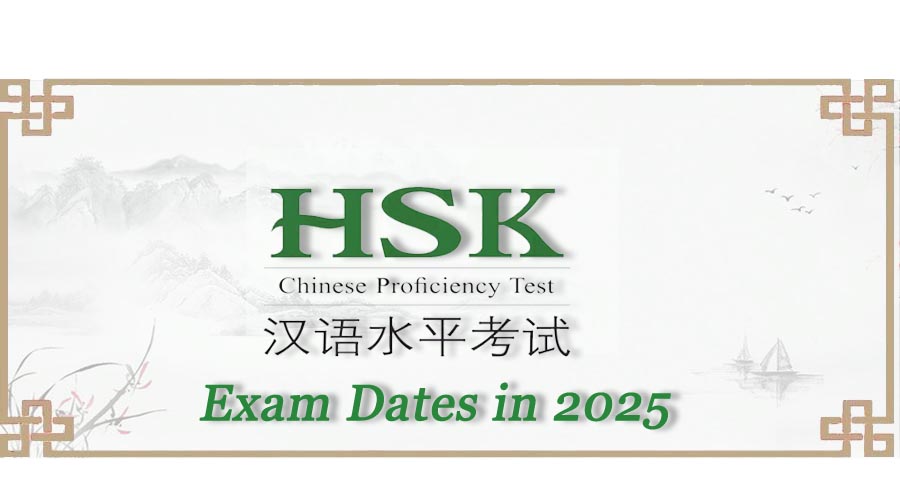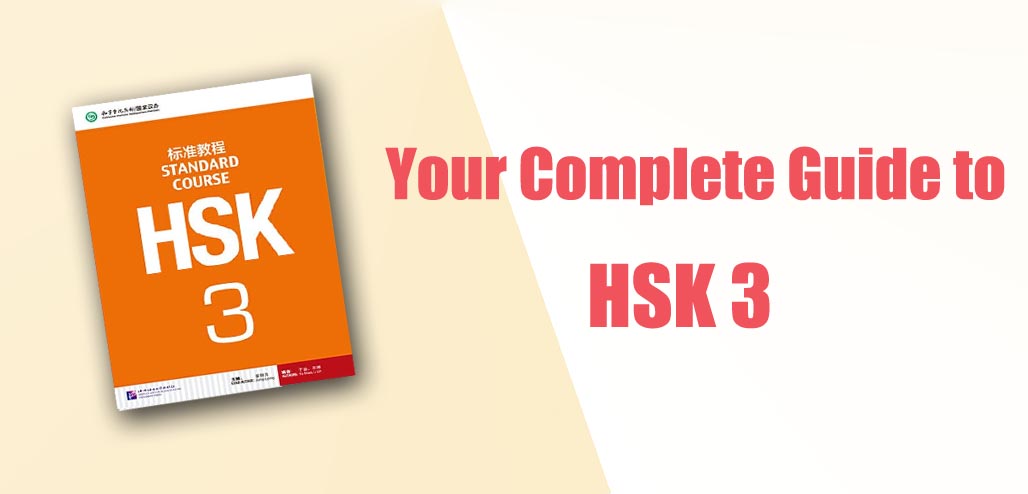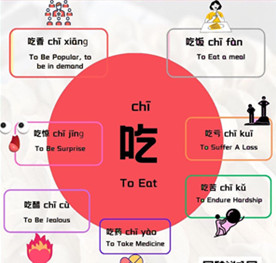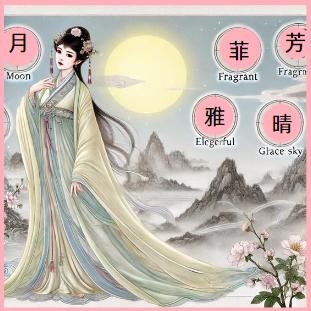100 Most Frequently Chinese Characters
——-Learn Chinese Characters
Table of Content
- Why the Top 100 Mandarin Characters Matter
- The Power of Incremental Learning
- Free Use Most Common Chinese Characters Quiz
- Top 100 Most Frequently Used Characters in Chinese Language and Free Download
- Basics of Chinese Characters
- Techniques for Learning Chinese Characters
- Chinese Practical Sentences and Applications
- Cultural Background and Further Reading
- Advanced Techniques: Taking Your Learning Chinese Characters to the Next Level
Chinese characters, or Hanzi汉字( hàn zì), are not just tools for communication; they are an essential element of Chinese heritage and culture. Mastering these characters can unlock the full potential of the language and provide a deeper understanding of historical texts and modern contexts alike. In this guide, we explore the basics, effective learning strategies, and the cultural significance of Chinese characters.
Why the Top 100 Mandarin Characters Matter
Research reveals a compelling fact: knowing just the top 100 most common Chinese characters enables you to understand a substantial portion of everyday Chinese text. This foundational knowledge not only boosts your reading proficiency but also instills the confidence needed to tackle more complex texts.
However, mastering these characters is merely the first step on a long journey. As you delve deeper into the language, it’s common to feel overwhelmed by the vast number of characters yet to be learned. Feeling daunted is a natural part of the language learning process—everyone goes through it.
At this stage, expert guidance can become invaluable. With the right support, you can navigate the complexities of language learning more smoothly, transforming challenges into opportunities for growth and mastery. By gradually expanding your vocabulary, you ensure continuous progress, keeping motivation high and making each new character more approachable.
The Power of Incremental Learning
To truly master Chinese characters, you need to adopt a strategy of incremental learning. Start with the basics—the top 100 characters—and build from there. Understanding 500 characters allows you to comprehend 75% of modern Chinese texts. Expanding your knowledge to 1000 characters increases your understanding to 89%. Mastering 2000 characters will cover 97% of texts, while 3000 characters will give you almost complete coverage at 99%.
Here’s a visual breakdown of how each milestone improves your comprehension:
As you can see, even small steps in learning can have a big impact on your ability to understand Chinese. But we know that getting to these milestones can sometimes feel overwhelming.
Free Use Most Common Chinese Characters Quiz
Top 100 Most frequently Used Characters in Chinese Language and Free Download
Here are the 100 most frequently used Chinese characters, let’s try and learn right away. If you can master these characters, you’ll be well on your way to becoming fluent in Chinese. If there is any difficulty in learning these Chinese words, please feel free to contact us and get free Chinese lesson.
| Number | Character | Pinyin | Meaning | Detailed Explanation | Example Sentences |
| 1 | 的 | de | of, possessive particle | Indicates possession, akin to ‘s in English, often used to form attributive adjectives, emphasizing characteristics. | 这是我的书 ( (Zhè shì wǒ de shū) — This is my book. |
| 2 | 一 | yī | one, a | The most basic numeral, used both alone and in compound numbers. It acts as an indefinite article. | 我买了一本书 (Wǒ mǎi le yī běn shū) — I bought a book. |
| 3 | 是 | shì | is, to be | Primary copula, linking the subject with predicates; essential for forming sentences. | 他是学生 (Tā shì xuéshēng) — He is a student. |
| 4 | 不 | bù | not | Main adverb of negation, used to negate verbs and adjectives. | 我不喜欢 (Wǒ bù xǐhuān) — I don’t like it. |
| 5 | 了 | le | past tense marker | Signifies completed actions or changes in state. | 我吃了 (Wǒ chī le) — I have eaten. |
| 6 | 在 | zài | at, in | Indicates location or ongoing action. | 我在家 (Wǒ zài jiā) — I am at home. |
| 7 | 人 | rén | person | Denotes human beings, fundamental in social contexts. | 那个人很好 (Nà ge rén hěn hǎo) — That person is good. |
| 8 | 有 | yǒu | to have | Expresses possession or existence. | 我有时间 (Wǒ yǒu shíjiān) — I have time. |
| 9 | 我 | wǒ | I, me | Refers to the speaker. | 我能做这个 (Wǒ néng zuò zhè ge) — I can do this. |
| 10 | 他 | tā | he, him | Generic pronoun for ‘he’ or ‘him’. | 他去学校了 (Tā qù xuéxiào le) — He went to school. |
| 11 | 这 | zhè | this | Demonstrative adjective for proximity. | 这是什么?(Zhè shì shénme?) — What is this? |
| 12 | 个 | gè | measure word | Common measure word. | 一个苹果 (Yī gè píngguǒ) — One apple. |
| 13 | 们 | men | plural marker | Plural marker for nouns. | 我们都在这里 (Wǒmen dōu zài zhèlǐ) — We are all here. |
| 14 | 中 | zhōng | middle, in | Symbolizes the middle or center. | 在中国 (Zài Zhōngguó) — In China. |
| 15 | 来 | lái | to come | Indicates motion towards the speaker or a specified place. | 你来吗?(Nǐ lái ma?) — Are you coming? |
| 16 | 上 | shàng | up, above | Used to describe position or direction. | 楼上 (Lóu shàng) — Upstairs. |
| 17 | 大 | dà | big | Describes size or age. | 大象 (Dà xiàng) — Elephant (padour. |
| 18 | 为 | wèi | for | Expresses purpose or reason. | 为什么?(Wèi shénme?) — Why? (For what reason?) |
| 19 | 和 | hé | and | Conjunction for combining nouns. | 我和你 (Wǒ hé nǐ) — Me and you. |
| 20 | 国 | guó | country | Refers to a country or nation. | 中国 (Zhōngguó) — China. |
| 21 | 为 | wèi | for, for the sake of, in order to | As a preposition, ‘为’ signifies a purpose or motive, emphasizing the intent behind actions. | 我们为了和平而战 (Wǒmen wèile hépíng ér zhàn) — We fight for peace. |
| 22 | 子 | zǐ | child, son | A common suffix in classical and modern Chinese, used to form nouns and often reflects diminution or endearment. | 小子,过来 (Xiǎo zǐ, guòlái) — Kid, come here. |
| 23 | 和 | hé | and, together, with | ‘和’ is the main conjunction for addition in Chinese, fostering harmony and inclusivity. | 咖啡和糖 (Kāfēi hé táng) — Coffee and sugar. |
| 24 | 你 | nǐ | you, your | The standard second-person singular pronoun, essential in direct address and interpersonal communication. | 你好吗?(Nǐ hǎo ma?) — How are you? |
| 25 | 地 | dì | earth, ground, soil, place, position, distance | Beyond its literal meaning, ‘地’ functions grammatically to form adverbs when paired with adjectives. | 他快乐地笑了 (Tā kuàilè de xiào le) — He laughed happily. |
| 26 | 出 | chū | go out, come out, in direction out from something | Indicates motion outward or emergence, often used metaphorically to describe the start of an action. | 出发了!(Chūfā le!) — Let’s go! |
| 27 | 道 | dào | way, path, channel, doctrine | ‘道’ encapsulates a path or method but is profoundly known for its philosophical connotations in Taoism. | 道可道,非常道 (Dào kě dào, fēi cháng dào) — The way that can be told is not the eternal way. |
| 28 | 也 | yě | also, as well | A simple adverb of addition, ‘也’ connects clauses and ideas, indicating agreement or similarity. | 我也是 (Wǒ yě shì) — Me too. |
| 29 | 时 | shí | period, season | Refers to time or season, crucial in historical and contextual descriptions. | 那时,我在北京 (Nà shí, wǒ zài Běijīng) — At that time, I was in Beijing. |
| 30 | 年 | nián | year | ‘年’ marks divisions of time, central to describing ages, historical periods, or experiences. | 今年是2024年 (Jīnnián shì èr líng èr sì nián) — This year is 2024. |
| 31 | 得 | de | verb particle, used to form a complementary result | Structurally, ‘得’ allows for the elaboration on the result or manner of an action. | 他跑得很快 (Tā pǎo de hěn kuài) — He runs fast. |
| 32 | 就 | jiù | just, simply, right away | Conveys immediacy or inevitability, often suggesting a conclusion or a transition based on context. | 我就去 (Wǒ jiù qù) — I’ll go right away. |
| 33 | 那 | nà | that | ‘那’ functions as a demonstrative adjective or pronoun, indicating objects or ideas further from the speaker. | 看那边!(Kàn nà biān!) — Look over there! |
| 34 | 要 | yào | want, will, shall, need, important, essential | Versatile, indicating desire, necessity, or future action. | 我要走了 (Wǒ yào zǒu le) — I am going to leave. |
| 35 | 下 | xià | below, under, (go) down, next | Describes relative position or sequential action. | 往下看 (Wǎng xià kàn) — Look down. |
| 36 | 以 | yǐ | use, take, according to, because of, in order to | ‘以’ indicates causation or means, used to express reason or method. | 以人为本 (Yǐ rén wéi běn) — People-oriented. |
| 37 | 生 | shēng | give birth, life | Represents life or birth, both in biological and metaphorical senses. | 新生儿 (Xīnshēng ér) — Newborn. |
| 38 | 会 | huì | can, able, meet, meeting, society, union, party | Polysemous, meaning ability, possibility, or a gathering. | 我们会见面的 (Wǒmen huì jiànmiàn de) — We will meet. |
| 39 | 自 | zì | from, since | ‘自’ suggests origination or independence. | 自由自在 (Zìyóu zìzài) — Free and easy. |
| 40 | 着 | zhe | verb particle marking a continuing progress/state | A non-finite marker indicating ongoing action or state. | 雨下着 (Yǔ xià zhe) — It is raining. |
| 41 | 去 | qù | go, leave, depart | Commonly used to indicate movement away from the speaker’s location. | 我明天去北京 (Wǒ míngtiān qù Běijīng) — I am going to Beijing tomorrow. |
| 42 | 之 | zhī | subordinator similar to 的 | Classical Chinese grammatical particle, often seen in formal or literary contexts. | 山之高 (Shān zhī gāo) — The mountain’s height. |
| 43 | 过 | guò | pass, cross, go by, exceed | Marks experiences or actions that have been completed in the past. | 我去过中国两次 (Wǒ qùguò Zhōngguó liǎng cì) — I have been to China twice. |
| 44 | 家 | jiā | home, house, family | Centers on concepts of family and dwelling. | 我家在哪里?(Wǒ jiā zài nǎlǐ?) — Where is my home? |
| 45 | 学 | xué | study, learn | Fundamental to educational discourse. | 他在学习中文 (Tā zài xuéxí Zhōngwén) — He is studying Chinese. |
| 46 | 对 | duì | correct, answer, treat, agree, mutual, pair | Used to indicate correctness or an affirmative response. | 你的回答很对 (Nǐ de huídá hěn duì) — Your answer is correct. |
| 47 | 可 | kě | able, may, can | Modifies verbs to indicate possibility or permission. | 这可不行!(Zhè kě bù xíng!) — This won’t do! |
| 48 | 她 | tā | she, her | Feminine third-person singular pronoun. | 她是我的朋友 (Tā shì wǒ de péngyǒu) — She is my friend. |
| 49 | 里 | lǐ | neighbourhood, half kilometer | Also used as a general locative particle meaning ‘inside’ or ‘within’. | 在房间里 (Zài fángjiān lǐ) — Inside the room. |
| 50 | 后 | hòu | behind, back | Refers to spatial or temporal sequences. | 站在我后面 (Zhàn zài wǒ hòumiàn) — Stand behind me. |
| 51 | 小 | xiǎo | small | Describes size or age, often used to indicate something lesser or younger. | 小猫 (Xiǎo māo) — Kitten (little cat). |
| 52 | 么 | me | interrogative suffix | Used at the end of questions. | 怎么了?(Zěnme le?) — What’s wrong? |
| 53 | 心 | xīn | heart | Symbolically represents emotions or the essence of thought. | 小心点!(Xiǎoxīn diǎn!) — Be careful! |
| 54 | 多 | duō | many, much, more | Quantitative adverb used to express a large amount or degree. | 多美丽啊!(Duō měilì a!) — How beautiful! |
| 55 | 天 | tiān | sky, heaven, day | Used both literally and figuratively, relating to the natural world and the divine. | 天气很好 (Tiānqì hěn hǎo) — The weather is good. |
| 56 | 而 | ér | and, furthermore | A conjunction used to connect clauses, indicating a progression or addition in thought. | 智而不说 (Zhì ér bù shuō) — Wise but silent. |
| 57 | 能 | néng | can, be able | Expresses capability or ability. | 我能帮忙 (Wǒ néng bāngmáng) — I can help. |
| 58 | 好 | hǎo | good, well, easy to… | Qualitative adjective that also functions as an adverb in certain contexts. | 好主意!(Hǎo zhǔyì!) — Good idea! |
| 59 | 都 | dōu | all, both | An inclusive adverb used to generalize statements. | 我们都累了 (Wǒmen dōu lèi le) — We are all tired. |
| 60 | 然 | rán | correct, so, like that | Often used in compound adverbs ending in ‘-ly’. | 自然而然 (Zìrán érrán) — Naturally. |
| 61 | 没 | méi | (=没有 méiyǒu) haven’t, there isn’t | Used to negate the existence or occurrence of something in the past. | 我没去过那里 (Wǒ méi qù guò nàlǐ) — I have never been there. |
| 62 | 日 | rì | sun | Represents the sun, used to mark days or in terms related to the sun. | 日出 (Rìchū) — Sunrise. |
| 63 | 于 | yú | in, at, for, to, from, by, than | A preposition used in formal or literary contexts to indicate relation or comparison. | 幸福于我 (Xìngfú yú wǒ) — Happiness to me. |
| 64 | 起 | qǐ | rise, start | Indicates the beginning of an action or movement. | 起飞 (Qǐfēi) — Take off. |
| 65 | 还 | hái | still, yet | Used to indicate continuation or an additional element. | 还有问题吗?(Hái yǒu wèntí ma?) — Are there any more questions? |
| 66 | 发 | fā | deliver, utter, express, shoot, emit, develop, expand | Covers a wide range of actions related to starting or releasing. | 发现 (Fāxiàn) — Discover. |
| 67 | 成 | chéng | (=成为 chéngwéi) become; 成功 chénggōng succeed; 完成 wánchéng accomplish, complete | Indicates the completion or success of a process. | 成功了!(Chénggōng le!) — It’s a success! |
| 68 | 事 | shì | matter, affair, thing, event, accident, job, responsibility | Refers to events, tasks, or responsibilities. | 处理事情 (Chǔlǐ shìqíng) — Handle matters. |
| 69 | 只 | zhǐ | only, just, merely | Used to limit the scope or degree of an action. | 只要努力 (Zhǐ yào nǔlì) — Just need to work hard. |
| 70 | 作 | zuò | do, make | Refers to the action of doing or making something. | 作决定 (Zuò juédìng) — Make a decision. |
| 71 | 当 | dāng | serve as | Used to indicate a role or function someone or something fulfills. | 当领导 (Dāng lǐngdǎo) — Serve as a leader. |
| 72 | 想 | xiǎng | think, feel, consider, want, remember | Covers a range of mental processes from thinking to wanting. | 我想你 (Wǒ xiǎng nǐ) — I miss you. |
| 73 | 看 | kàn | see, look at, think | Used for visual perception or consideration. | 看问题 (Kàn wèntí) — Look at the issue. |
| 74 | 文 | wén | language, literature | Relates to text, language, or culture. | 文化 (Wénhuà) — Culture. |
| 75 | 无 | wú | without, nothingness, have not | Denotes absence or lack of something. | 无声 (Wúshēng) — Soundless. |
| 76 | 开 | kāi | open | Refers to the action of opening or beginning something. | 开门 (Kāimén) — Open the door. |
| 77 | 手 | shǒu | hand, a person skilled in something | Can refer to the physical hand or someone’s skill or control. | 手艺 (Shǒuyì) — Craftsmanship. |
| 78 | 十 | shí | ten | The numeral for ten, fundamental in counting and numerical systems. | 十天 (Shí tiān) — Ten days. |
| 79 | 用 | yòng | use | Describes the action of using something. | 使用 (Shǐyòng) — To use. |
| 80 | 主 | zhǔ | lord, master, host, god | Indicates a person with control or authority. | 主人 (Zhǔrén) — Master or host. |
| 81 | 行 | xíng | go, OK | Used to express feasibility or permission, also means to walk or travel. | 可以行 (Kěyǐ xíng) — It can work. |
| 82 | 方 | fāng | side, square | Refers to direction or aspect, also used as a measure word for square objects. | 方向 (Fāngxiàng) — Direction. |
| 83 | 又 | yòu | again, both… and… | Used to indicate repetition or simultaneity in actions. | 又大又圆 (Yòu dà yòu yuán) — Both big and round. |
| 84 | 如 | rú | like, as, as if | Used for making comparisons or hypothetical statements. | 如此美丽 (Rúcǐ měilì) — So beautiful. |
| 85 | 前 | qián | in front, previous, ago, former, first | Indicates position in space or time, often used in historical or sequential contexts. | 前方 (Qiánfāng) — Ahead. |
| 86 | 所 | suǒ | place | Used to form nominal expressions indicating place or that which is possessed. | 所见所闻 (Suǒ jiàn suǒ wén) — What one sees and hears. |
| 87 | 本 | běn | basis, origin, edition classifier for books, periodicals, files, etc. | Refers to the foundation or base of something, also used as a classifier for books. | 本书 (Běn shū) — This book. |
| 88 | 见 | jiàn | appear to be, meet with, call on | Used to describe the act of seeing or meeting, often in formal contexts. | 见面 (Jiànmiàn) — Meet up. |
| 89 | 经 | jīng | longitude (both geographic and in Chinese medicine), scripture, constant, regular, deal with | Refers to passing through or enduring, also used for scriptures or classic works. | 经历 (Jīnglì) — Experience. |
| 90 | 头 | tóu | head, top, first | Indicates the top or beginning of something. | 头等 (Tóu děng) — First class. |
| 91 | 面 | miàn | face, surface | Refers to the face of a person or object, or a flat surface. | 面对面 (Miàn duì miàn) — Face to face. |
| 92 | 公 | gōng | public, official | Used to describe things pertaining to the public or official matters. | 公共场所 (Gōnggòng chǎngsuǒ) — Public place. |
| 93 | 同 | tóng | same, with | Used to indicate sameness or being together. | 同意 (Tóngyì) — Agree. |
| 94 | 三 | sān | three | The numeral three, used extensively in counting and categorizing. | 三角形 (Sānjiǎoxíng) — Triangle. |
| 95 | 已 | yǐ | already | Indicates completion or a past state. | 已完成 (Yǐ wánchéng) — Already completed. |
| 96 | 老 | lǎo | old, venerable, outdated | Refers to age or the state of being old, often used respectfully. | 老师 (Lǎoshī) — Teacher. |
| 97 | 从 | cóng | from, through, join, follower, secondary | Indicates origin, movement from a place, or following. | 从这里到那里 (Cóng zhèlǐ dào nàlǐ) — From here to there. |
| 98 | 动 | dòng | move, change, arouse | Describes any form of movement or change. | 动起来 (Dòng qǐlái) — Start moving. |
| 99 | 两 | liǎng | two (before classifier), 50 grams | Used as a numeral before measure words, indicating the number two. | 两个人 (Liǎng gè rén) — Two people. |
| 100 | 长 | cháng | long, lasting, length | Describes length or duration, also used as an adjective to indicate something is long. | 长江 (Chángjiāng) — Yangtze River. |
Free Download Most Common Chinese Characters Excel
Basics of Chinese Characters
1. Structure of Chinese Characters
Each Chinese character is a composition of strokes and patterns. The building blocks of these characters are radicals, which often indicate the character’s semantic meaning or function. Radicals can help you decipher the meaning of complex characters and aid in categorization.
Characters are made up of several strokes, whose correct sequence is crucial for writing legibly and traditionally. Understanding the basic strokes—such as horizontal (一), vertical (丨), left-falling (丿), and right-falling (丶)—is the first step in learning to write.
2. Types of Chinese Characters
Characters can be phonetic, carrying sound information, or semantic, conveying meaning. A significant aspect of learning Hanzi is distinguishing between these components to enhance memorization and comprehension.
The distinction between Simplified and Traditional characters is also vital, especially for learners dealing with varied texts from Mainland China, Taiwan, or historical literature. Simplified characters use fewer strokes and are commonly used in Mainland China, whereas Traditional characters are prevalent in Taiwan and Hong Kong.
Techniques for Learning Chinese Characters
1. Memorization Techniques
Learning Chinese characters can be daunting due to their complexity. Associative learning—linking characters with visual images or stories—can significantly aid memorization. Additionally, regular repetition practice is indispensable for retaining what you’ve learned, and employing spaced repetition enhances long-term memory of characters.
2. Writing Techniques
Proper stroke order is not just about tradition; it helps learners write faster and more intuitively. For practice, tools like brush pens or apps that simulate the writing experience can be extremely helpful. Websites offering structured practice sessions are invaluable resources for beginners.
Need a Confidence Boost To Learn Common Mandarin Chinese Characters? We’re Here to Help!
As you progress, it’s common to experience moments of self-doubt or anxiety. Maybe you’re finding it hard to remember new characters, or perhaps you’re worried about your pace of learning. At times like these, having the right support can make all the difference.
At Mandarin Zone School, we specialize in helping learners just like you overcome these hurdles. Our experienced teachers provide personalized guidance to ensure you’re not just learning but mastering Chinese with confidence.
Whether you’re struggling with certain characters, unsure how to move forward, or just need a motivational boost, we’re here to help. Don’t let these challenges slow you down—reach out to us, and let’s tackle them together. Contact us today and take the next step toward mastering Chinese.
Chinese Practical Sentences and Applications
1. Common Characters and Phrases
To put theory into practice, let’s explore some common characters. For instance, the character 是 (shì, meaning ‘to be’) is ubiquitous in daily conversation. In the phrase 这是 (zhè shì – ‘this is’), mastery of a single character allows you to construct numerous sentences.
2. Everyday Conversation Applications
Incorporating learned characters into daily use is crucial for mastery. Simple dialogues, like asking basic questions or greeting someone, can build confidence. For example, 你好 (nǐ hǎo – ‘hello’) and 谢谢 (xiè xiè – ‘thank you’) are practical applications of common characters.
Cultural Background and Further Reading
1. Chinese Characters and Chinese Culture
Chinese characters are deeply intertwined with cultural practices and philosophical thoughts. Their evolution mirrors the historical and cultural shifts within Chinese society. Understanding characters like 爱 (ài – ‘love’) can offer insights into the values held by ancient and modern Chinese societies.
2. Advanced Learning Resources
For those interested in deepening their understanding, various online platforms and mobile apps offer advanced tutorials and exercises. Additionally, books on Chinese calligraphy and character history can provide a more nuanced view of the script’s development and artistic aspects.
Advanced Techniques: Taking Your Learning Chinese Characters to the Next Level
As you become more confident, you can incorporate more advanced techniques into your learning routine:
- Mandarin Characters to English: Practice translating Mandarin characters to English and vice versa. This will improve your comprehension and help you think in both languages.
- Learning Chinese with Context: Engage with more complex texts, such as short stories, essays, or news articles. This will expose you to a broader range of vocabulary and sentence structures.
- Chinese Writing Book: Consider purchasing a Chinese writing book that focuses on character etymology and stroke order. This will deepen your understanding of the language and improve your writing skills.
At Last:
Mastering the top 100 mandarin Chinese characters is an achievable goal that will set you on the path to fluency. By breaking down the learning process into manageable steps and seeking help when needed, you can build a strong foundation in Chinese. Remember, every learner faces challenges—what matters is how you overcome them.
Ready to get started or need some help along the way? Contact us at Mandarin Zone School, and let’s make your Chinese learning journey a success.








